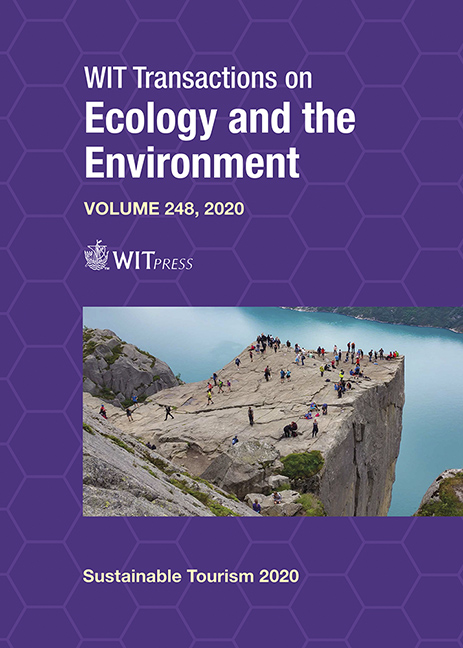SUSTAINABLE TOURISM AND INTANGIBLE CULTURAL HERITAGE: THE CIMBRIAN LANGUAGE IN LUSERNA/LUSÈRN AND GIAZZA, ITALY
Price
Free (open access)
Transaction
Volume
248
Pages
13
Page Range
51 - 63
Published
2020
Paper DOI
10.2495/ST200051
Copyright
WIT Press
Author(s)
SERENA LONARDI
Abstract
Intangible Cultural Heritage — i.e. practices, representations, expressions, knowledge and skills that a population recognizes as part of their cultural heritage — represents a distinctive factor for a tourism destination, as tourists are increasingly interested in unique experiences deeply connected with the authentic culture of the place. Intangible heritage is, therefore, part of the discourse on sustainability on tourism. Sustainable tourism activities, seen as activities that aim at not compromising the ability of future generations to meet their own needs and to access to natural and cultural resources, comprise intangible heritage that only survives and is available to future generations with continuous and daily practice by the population. One of the most important aspects of intangible heritage, according to The Convention for the Safeguarding of the Intangible Cultural Heritage, is the language since it stands for a unique worldview and is the vehicle of the collective memories and values. More than one-third of the languages spoken in the world today, however, are endangered. Previous studies proved that tourism strengthens the sense of cultural identity of minority groups and thus encourages the population to learn more, creating a virtuous circle of cultural revival. Nonetheless, current literature only partly considers the positive impacts of tourism on minority languages, while partially neglecting Italy, although it is home to 31 endangered languages. This study will fill in a gap by considering the case of Cimbrian people in Luserna/Lusérn and Giazza, Italy, where a population with Bavarian origins still speak the dialect of their ancestors. Through qualitative interviews, this study aims to analyse whether and to what extent tourism in these two small Italian towns can be seen as sustainable, i.e. whether it contributes to the revitalization of this particular language.
Keywords
sustainable tourism, minority language, Cimbrian, intangible cultural heritage, cultural tourism, qualitative methodology





